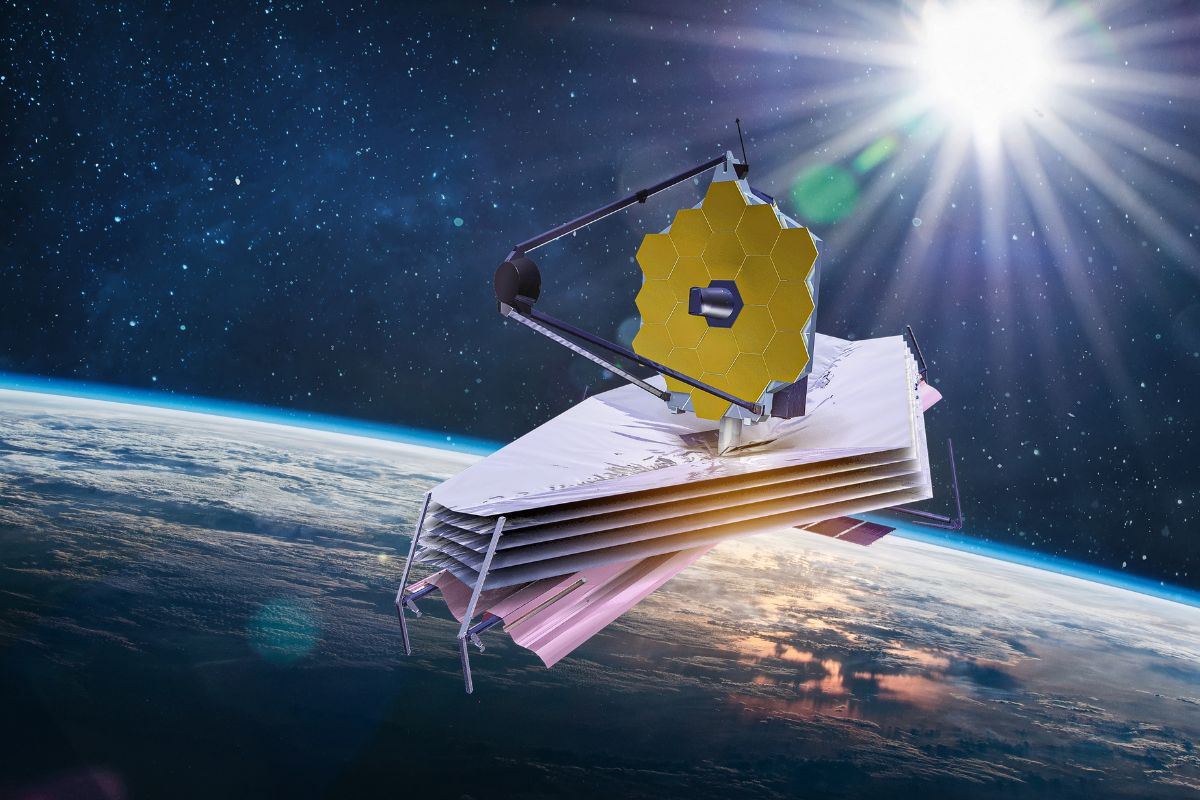Show table of content Hide table of content
The James Webb Space Telescope has captured an unprecedented view of the deep Universe, revealing galaxies forming in the cosmic dawn. This remarkable achievement marks a significant milestone in our understanding of the early Universe, requiring over 120 hours of continuous observation focused on a single target. The groundbreaking image showcases Abell S1063, a massive galaxy cluster acting as a cosmic magnifying glass through gravitational lensing, allowing astronomers to peer further back in time than ever before.
Revolutionary cosmic imagery reveals early universe secrets
The James Webb Space Telescope (JWST) has achieved what scientists are calling the “deepest view to date” of the Universe on a single target. This extraordinary image unveils galaxies forming during the Universe’s infancy, a period known as the cosmic dawn. The European Space Agency (ESA) and the French National Centre for Scientific Research (CNRS) announced this breakthrough on May 27, 2025.
The observations required unprecedented dedication, with the telescope focusing on a single cosmic region for over 120 hours. This represents the longest period JWST has concentrated on one target, producing one of the most profound cosmic portraits ever captured. Scientific teams, including researchers from the Paris Institute of Astrophysics, collaborated internationally to achieve this remarkable feat.
News This TikToker buys a used van and realizes it has a hidden surveillance device.
At the heart of this cosmic portrait sits Abell S1063, a massive galaxy cluster located 4.5 billion light-years from Earth in the Grus constellation. Much like ancient species trapped in isolated environments evolve unique characteristics, these distant galaxies reveal evolutionary patterns from the Universe’s earliest epochs. The image comprises nine separate exposures at different near-infrared wavelengths, providing unprecedented detail of these primordial cosmic structures.
The scientific community anticipates that detailed analysis of this image will challenge existing theories about galaxy formation. Early findings already suggest that galaxies in the primitive Universe were significantly larger than scientists previously theorized, raising fundamental questions about our cosmic understanding.
Gravitational lensing: nature’s cosmic telescope
The true scientific value of this image lies in the distorted arcs surrounding Abell S1063. These arcs result from gravitational lensing, a phenomenon where massive objects bend light from more distant sources behind them. This natural cosmic magnification allows astronomers to observe galaxies that would otherwise remain invisible, even to Webb’s powerful instruments.
Gravitational lensing functions similarly to how advanced technologies reveal ancient hidden knowledge, providing glimpses into previously inaccessible cosmic realms. The massive cluster’s gravitational field warps spacetime itself, creating a cosmic magnifying glass that enhances the telescope’s already impressive capabilities.
This technique proves invaluable for studying the earliest galaxies that formed during the Universe’s first billion years. By analyzing the light from these distorted galaxies, scientists can determine their composition, age, and formation processes. The data reveals not only the earliest galaxies but also captures the first generations of stars igniting in the cosmic darkness.
The study of these distant cosmic structures through gravitational lensing represents a convergence of Einstein’s theoretical predictions with cutting-edge observational astronomy. Much like how geological transformations reshape Earth’s continents, these cosmic lenses reshape our view of the Universe’s earliest chapters.
Webb telescope transforming astronomical research
Since its deployment in 2022, the James Webb Space Telescope has revolutionized astronomical research. Its advanced infrared capabilities allow it to peer through cosmic dust clouds and observe objects at distances previously unattainable. The telescope represents one of humanity’s most sophisticated technological achievements, operating 1.5 million kilometers from Earth.
Webb’s observations have consistently challenged established cosmic theories. The telescope has revealed that early Universe galaxies were surprisingly mature, containing unexpected stellar populations and structures. These findings suggest galaxy formation processes may have begun earlier than current models predict, potentially transforming our understanding of cosmic evolution.
News Bat wings after 50? Here’s the most effective exercise, according to a coach.
The telescope’s ability to observe in infrared wavelengths proves crucial for studying the early Universe. As cosmic expansion stretches light waves from distant objects into the infrared spectrum, Webb’s specialized instruments can detect this ancient light. This capability has enabled discoveries that would remain invisible to optical telescopes like Hubble.
The telescope’s impact extends beyond pure astronomy. Just as large-scale technological projects can transform environments, Webb’s observations are transforming the intellectual landscape of cosmology. Each new image prompts scientific reassessment and inspires public imagination about our cosmic origins.
Probing the cosmic dawn with unprecedented clarity
The “cosmic dawn” represents a pivotal period when the Universe transitioned from darkness to light as the first stars and galaxies formed. Webb’s latest image provides an unprecedented window into this formative epoch, occurring roughly 13 billion years ago. Understanding this period addresses fundamental questions about how the Universe evolved from primordial hydrogen gas into the complex structures we observe today.
Scientists analyze the spectral signatures from these early galaxies to determine their chemical composition. The earliest galaxies contained primarily hydrogen and helium, with heavier elements being forged later in stellar furnaces. Tracking this chemical evolution helps astronomers understand how the building blocks for planets and life accumulated over cosmic time.
The unexpected scale and complexity of these early galaxies suggest cosmic evolution may proceed through dramatic events rather than gradual processes. Similar to how sudden geological events can transform landscapes, rapid bursts of star formation may have shaped the early Universe.
The longevity of Webb’s observation time on this single target demonstrates astronomers’ commitment to understanding cosmic origins. This dedication mirrors the persistence seen in other scientific pursuits, such as researchers studying extraordinary biological phenomena that challenge existing scientific paradigms. The resulting image represents not just a technical achievement but a profound advancement in our cosmic understanding.


